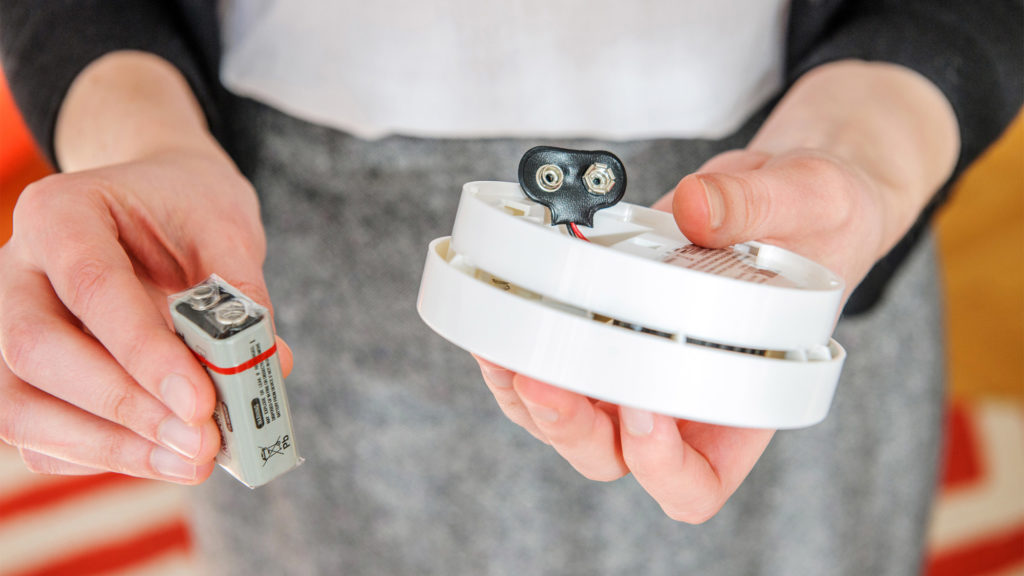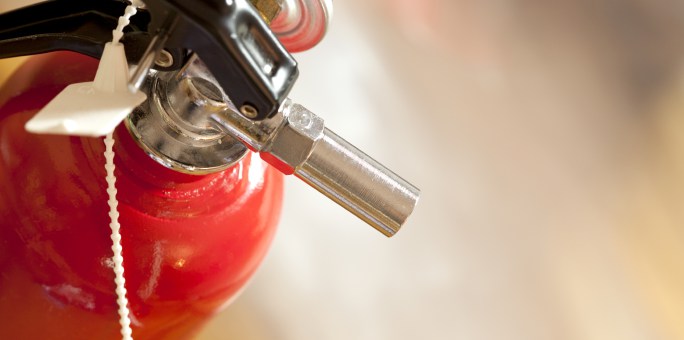When it comes to house fires, a momentary lapse of attention is all it takes for the unthinkable to occur. Having the right reflexes in a crisis could save your life, and the lives of those you hold dear.
You should also read our article on ensuring a safe holiday season.
Smoke alarms
A working smoke alarm is your first line of defence when it comes to fire prevention. Since most home fires occur at night, it’s important you make sure your smoke alarm is loud enough to wake you up.
You should place an alarm on each floor of your home, including your basement. It’s wise to set them up in hallways and common areas, while keeping them away from air vents, cooking apparatus and heating systems. If you live in a multi-level home, you should go for interconnected smoke alarms. This way, regardless of the source of the flames, all your alarms will go off simultaneously.
If you’re renting, it’s your landlord’s responsibility to supply you with working smoke alarms. However, you are responsible for maintaining them.
The Quebec government insists that all smoke alarms should be tested manually every month. You simply have to hold down the test button until the alarm goes off. If your alarm doesn’t have a test button, blow out a candle right under your alarm. The alarm should normally go off within thirty seconds. If that’s not the case, you absolutely need to change the battery in your smoke alarm, or replace it with a new model altogether. Whatever happens, you should change the battery every year, and you’re better off going with a long-lasting battery. You could also go for an electric model, with a back-up battery in case of a power outage.
A smoke alarm has a life expectancy of ten years. Your alarm’s fabrication date should be written on it. If not, it’s high time you replace it.

Portable fire extinguisher
To ensure your family’s safety, your smoke alarm should be matched with a portable fire extinguisher. It should be accessible, easily spotted and close to an exit. Make sure you keep the instructions for use and maintenance close by. Of course, you should read and master these instructions before a fire breaks out. Take advantage of your smoke alarm’s yearly maintenance to brush up on your extinguisher’s instructions.
There are three types of extinguishers, depending on the type of fire. Class A are for wood, paper or cloth fires. Class B extinguishers are used on grease, oil, gas or chemical flames, whereas Class C are mostly concerned with electrical equipment.
This is why it’s recommended to go with Class ABC extinguishers which, although more expensive, will protect your family regardless of the source of the flames. Keep in mind, however, that they can only be used on a budding or small fire. It’s no use trying to tame flames that are too high; you’ll only put your safety at risk.

Evacuation plan
You should also set up an evacuation plan. Your family needs to be able to vacate the premises as soon as possible in case of fire. In order to do so, it’s recommended you draw up your own evacuation plan in a physical form, like the one offered by the Government of Quebec. You need to take into account available exits, as well as the location of the smoke alarms and portable fire extinguishers. The exits indicated on your plan should remain unencumbered at all times, free from cumbersome objects on the inside and large snow drifts on the outside.
When you’re going over the user guide and maintenance for your portable fire extinguisher, set aside some time for an evacuation drill with your entire family.
Lastly, if you’re renting your property, see with the landlord what evacuation protocol they’ve established.
- Since most home fires occur at night, it’s important you make sure your smoke alarm is loud enough to wake you up.
- It’s recommended to go with Class ABC extinguishers, even though they’re more expensive.
- The Government of Quebec offers a document to help you draw up your home evacuation plan.
